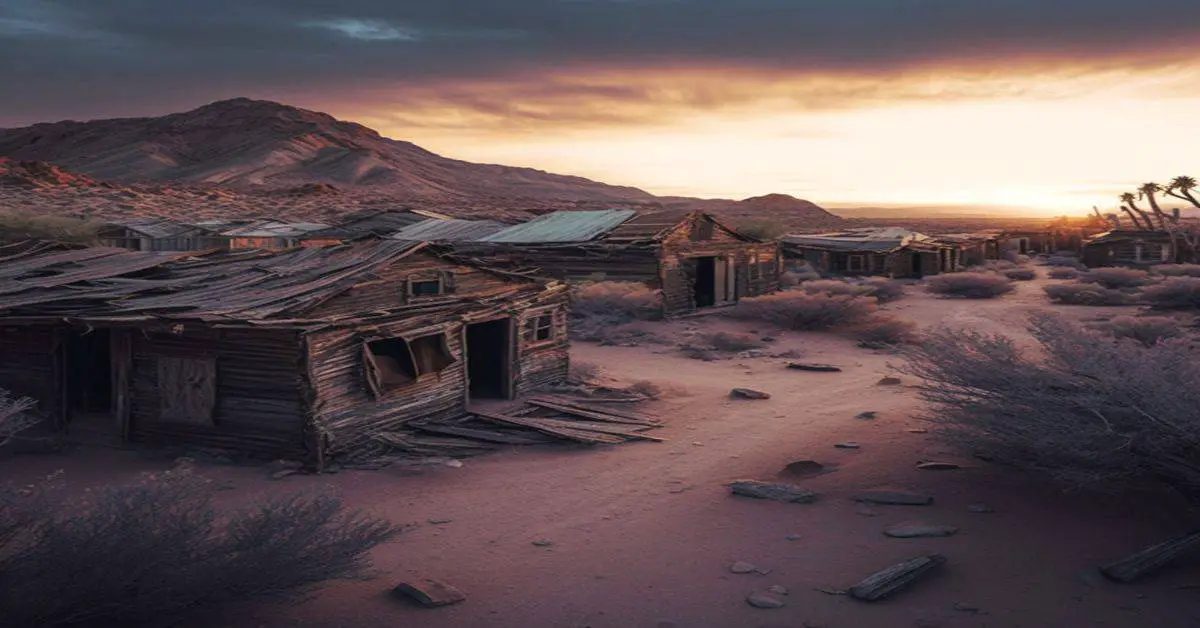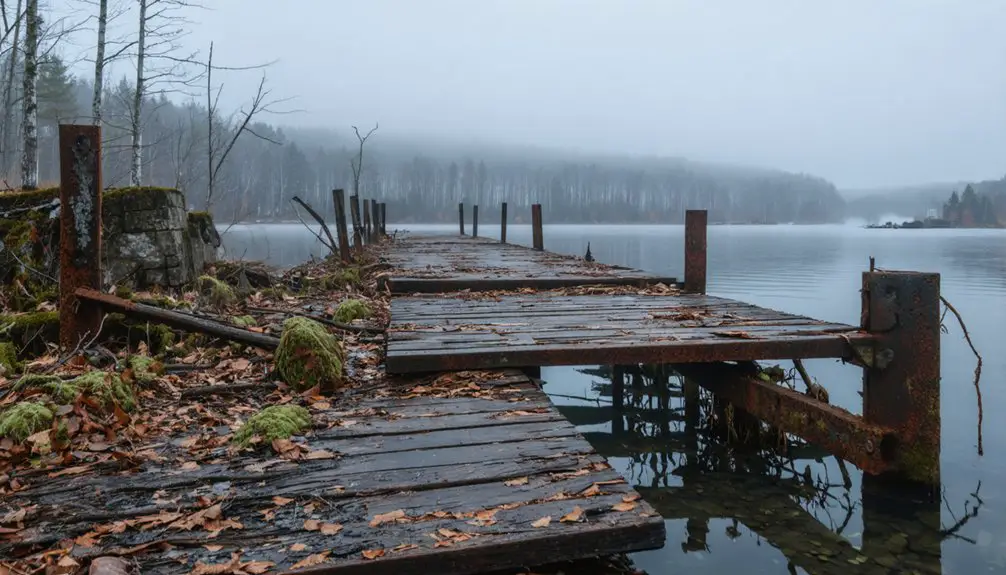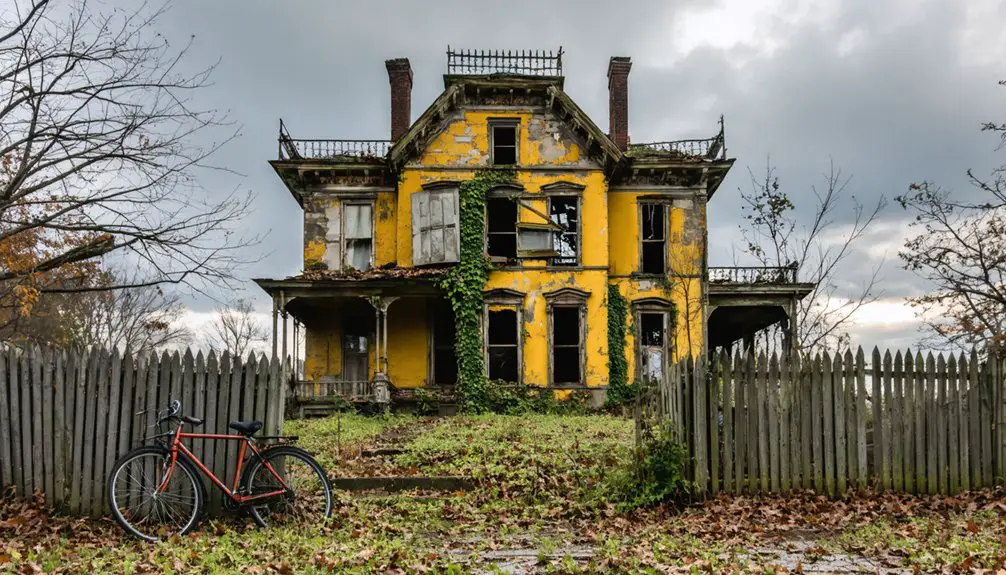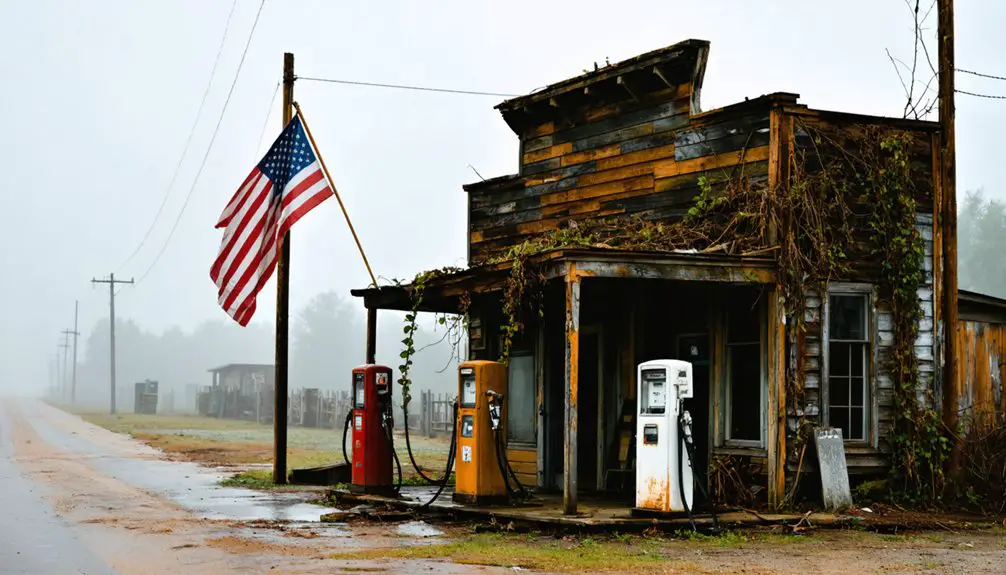New York became the 11th state of the United States on July 9, 1776.
There are 18 ghost towns in New York. Most of New York’s ghost towns can be found between the invisible boundary going from Syracuse south to Binghamton, east to Kingston, north to Albany, and east back to Syracuse.
New York’s rich history dates back to 1626 when the Dutch purchased Manhattan island from the Native Americans. Thirty-eight years later, in 1664, England chose the name New York after the Duke of York and Albany, the brother of King Charles II.
Dicktown, New York
Dicktown does not currently have much information, but it is a ghost town in Putnam County. The city received its name due to the large number of settlers who interestingly shared the name Richard.
Doanesburgh, New York
The ghost town of Doanesburgh has been abandoned for quite some time. Named after Benjamin Doane, one of the first settlers to the area, a post office was established in 1839 but closed in 1855.
Doodletown, New York
The isolated valley where the former town of Doodletown was first inhabited by the Munsee and Haverstraw Indians. Stephanus Van Cortlandt, the first native-born mayor of New York City, purchased the land from the Haverstraw tribe in 1683.
Nearly 80 years later, in 1762, Ithiel June, a member of the French Protestant religious group known as Huguenots, bought 72 acres from a family already settled in the area. Once the sale was completed, the name Doodletown was established to describe the location and surroundings of the site, “dead valley.” English-speaking settlers later added the “town” suffix.
Early settlers often worked as loggers, miners, and farmers. The Doodletown road was frequently used by soldiers on both sides of the fight during the Revolutionary War and battles at Bear Mountain’s Fort Montgomery.
The Mountain Presbyterian Church, built in 1854, served families as a religious gathering location and a school. In the 1890s, the famous inventor Thomas Edison bought an iron mine in Doodletown to test a technique for improved methods of refining ore.
By the 1920s, Doodletown had reached 350 people, boasting a school, church, small businesses, two cemeteries, and around 70 homes. As Bear Mountain was being developed into a park, land in Doodletown was purchased as part of the park expansion.
By the 1950s, the majority of the population had moved away. The residents who refused to sell their land for the park expansion were unfortunate when they lost the land in land acquisition in 1965.
Buildings were demolished, roads were closed, and nature was allowed to overtake what was left standing. The schoolhouse was the last remaining building until the park commission had to tear it down in 1980 due to vandalism.
Many foundations, walls, and staircases are visible when visiting the former town. Hiking is a common area activity using new trails and old roadways.
Gravesites within the cemeteries have a wide range of dates from early to more recent years since former residents and their relatives can still choose to be buried in one of the Doodletown cemeteries. While hiking and sightseeing, it is highly advised to be cautious of rattlesnakes, copperheads, black snakes, and garters.
Jayville, New York
Starting as a mining community in the southwest part of St. Lawrence County, Jayville was founded in 1850. The town did not have a long history before succumbing to abandonment. Four years after the initial founding date, the mines opened to extract iron ore.
From 1854 to 1886, the mines operated under the ownership of Z.H. Benton, the founder of the mining community. Not much ore was extracted over the years, but the mine stayed in business.
When the Carthage and Adirondack Railroad was completed in 1886, the property Jayville was established on was leased to Bryon Benson under the company name Magnetic Iron Ore Co. Two years later; in 1888, the town was mostly abandoned when new deposits were located in mines south of Jayville’s.
A small portion of residents who remained in the town opened and operated sawmills throughout the 1890s. Mining ceased in 1892 when legal actions started over mineral rights and railroad tariffs. In the years following the end of the mines, Jayville could stay afloat through railroad traffic and the town’s sawmills.
In 1914, there was an attempt at reopening the mines when Howard Hughes, the new owner, spent three years and a substantial amount of money trying to pump water out of old mining pits that had flooded. It was believed a motherload of ore was waiting under the Twin Ponds, but all of Hughes’ efforts were unsuccessful.
As the water was pumped out, more would come in. The new mining group ready to work the mines soon relocated to other, more profitable mines as it became evident there would be no more mining at the Jayville mines. As of the year 2000, the population of Jayville was zero.
North And South Brother Islands, New York
The North and South Brother Islands can be found in the East River between the Bronx and Rikers Island. The Dutch West India Company claimed the islands in 1614. Originally named by the Dutch “De Gesellen,” translated to “the companions,” the islands later became known as Brother Islands by the English.
Throughout the 1600s, the islands would change ownership from the Dutch to the British and James Graham in 1695. Due to strong currents in the area, Graham did not develop the islands.
A lighthouse was established on North Brother Island in 1869, but the island remained uninhabited until 1885. Sometime in the mid-1880s, the Riverside Hospital was moved from Blackwell’s Island to North Brother. Initially, a smallpox hospital built in the 1850s, Riverside wanted to expand and treat other diseases such as typhoid, tuberculosis, and polio.
North Brother Island is also the site of the tragic wreck involving the steamboat General Slocum in 1904, where over 1,000 people died from drowning or being caught in the fire on the boat before it beached the island shores.
The island is also infamous for the confinement of Typhoid Mary in the early 1900s. Mary Mallon contracted typhoid in 1915, suffered a stroke in 1932, and died at the hospital in 1938. From 1915 to 1938, Mary contaminated over 122 people.
Due to the nationwide housing shortage that followed World War II, North Brother Island was a makeshift location for war veterans, college students, and their families to call home.
Today, the northern Brother Island remains abandoned and off-limits to the public while serving as a sanctuary to shorebirds and herons. Permits to visit buildings still standing are issued on academic relevance for scientific purposes only.
South Brother Island began as a dumping ground for the Manhattan area. Garbage, manure, offal, and carcasses were sent to the island to keep the city clean. Unfortunately, the island is only half a mile from the Bronx and the estates of the wealthy.
City residents gathered together and convinced the Queens County Supreme Court to stop all future dumping to rid the city of the smell and sight coming from the island dump.
After being cleaned up and debris-free, Jacob Ruppert, the early owner of the New York Yankees, bought the island and established a summer home until it burned down in 1909. Ruppert continued to own South Brother Island through the 1930s.
In 1944, John Gerosa of the Metropolitan Roofing Supply Company purchased the property with plans to build cottages for employees. However, those plans never came, and nobody has lived on the land since Jacob Ruppert. In 1975, Hampton Scows Inc. bought the island for a steal of only $10.
Scows continued to pay property taxes until it was sold again in 2007, but the land was never developed. For the price of $2 million in federal grant money, the National Oceanic and Atmospheric Administration’s Coastal and Estuarine Land Conservation Program allocated the land to the Wildlife Conservation Society. South Brother Island became a wildlife sanctuary and is the 13th island managed by the city’s Parks Department and the Bronx Zoo.



